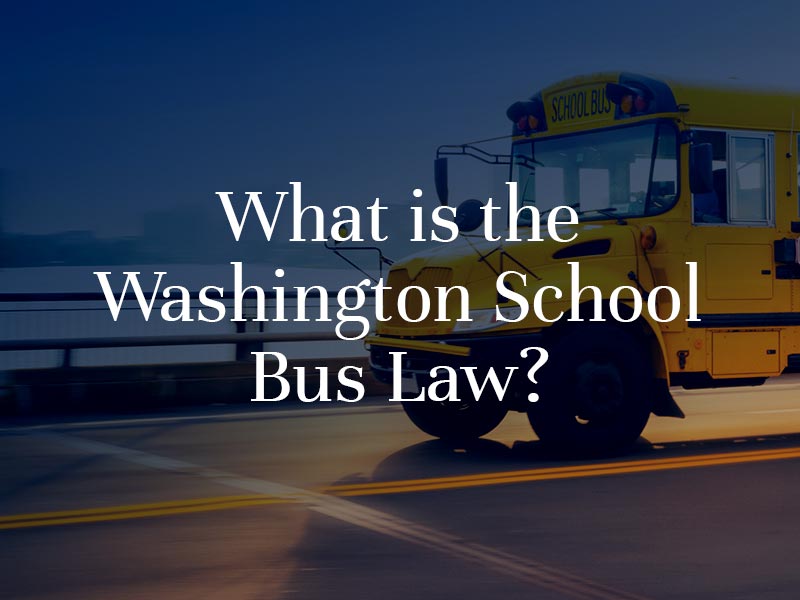
What Is the Washington School Bus Law?
Colburn Law
Posted in Safety Tips on November 14, 2019

To prevent injury to children who use the school bus, Washington state has a few rules in place that drivers must follow. These laws are common across the country: drivers must stop when a school bus emits a certain signal and wait until the vehicle drives away to avoid accidentally striking a child. However, not all drivers obey the Washington school bus law – leading to significant risks to schoolchildren throughout the state.
Rules for Driving Near a School Bus
According to the Illinois State Board of Education, children are at the greatest risk of injury or death when they are boarding or leaving their school bus. Most children between the ages of 5 to 7 suffer severe injuries or even die as a result of a car colliding with them while they are getting on or off the bus.
To prevent these deaths and injuries, Washington statute RCW 46.61.370 outlines strict guidelines for drivers who are traveling behind a school bus. According to the law, when a school bus stops, all drivers on both sides of the road must stop as well. This allows for children to board and leave the bus safely.
There are a few exceptions to this rule. If a driver is traveling the opposite direction of a school bus on a divided roadway, he or she does not have to stop when the school bus stops. Only drivers traveling in the same direction as the bus must stop. In addition, this law does not apply when traveling on a highway.
Consequences for Breaking the Washington School Bus Law
If a driver is traveling behind a school bus and does not stop when he or she is supposed to, the state will impose a fine up to $500. The proceeds from these fines go towards Washington’s school safety zone account to promote traffic safety for its students.
However, these fines are not the only consequences that can result from failing to obey the school bus law. If a driver attempts to pass a school bus, he or she could strike a child who is crossing the street after leaving the bus. The child can suffer from significant injuries, leading to death.
Drivers could face criminal charges for vehicular homicide in addition to the penalty for failure to stop, depending on the circumstances. This felony charge can lead to up to life in prison and/or up to $50,000 in fines.
The driver could also face civil action from the parents of the child. Since he or she is liable for the damages to the child, the driver would be responsible for paying for the child’s medical expenses, emotional damages, and potential funeral or burial expenses in the event of the death.
What to Do If Your Child Suffers a School Bus Injury
While these laws are in place for a very serious reason, some motorists can fail to stop when a bus is letting children board or leave. If a driver strikes your child when he or she is getting off the bus, it is important to take the following steps.
- Call 911 and get your child to a hospital as soon as possible. Your child will likely have serious injury and require immediate treatment. Make sure to collect every piece of documentation you can from the hospital.
- While you are taking your child to the hospital, ask another adult, such as the bus driver, a neighbor, or your spouse, to help you collect important pieces of information. Ask him or her to collect the at-fault driver’s name, contact information, and insurance details, as well as take pictures of the scene and collect the information of any other witnesses.
- A law enforcement officer will likely visit you to take you and your child’s statement after the accident. Answer the officer’s questions truthfully and completely, and ask for his or her information so that you can collect the report at a later time.
Once you’ve taken these crucial steps, contact a personal injury attorney who can help you with your insurance claim or lawsuit against the at-fault driver. Your Seattle bus injury attorney can help you navigate the aftermath of your child’s accident and help you determine the optimal pathways to hold the at-fault driver accountable.



